30 Sep 2024
What Are the Advantages of the Single-Sided Sloping Roof House Model?
What Are the Advantages of the Single-Sided Sloping Roof House Model?
Share:
When designing your dream home, every little detail can make a significant difference. One important aspect to consider is the roofing material used. COLORBOND®, with over 50 years of proven technology, offers a strong and durable roofing solution suitable for various types of homes, including single-sided sloping roofs.
By understanding the advantages and disadvantages of the single-sided sloping roof model, you can devise an appropriate strategy for its implementation. With COLORBOND®, you can ensure the best quality and durability, creating a home that is not only beautiful but also robust and long-lasting.
Advantages of the Single-Sided Sloping Roof Model
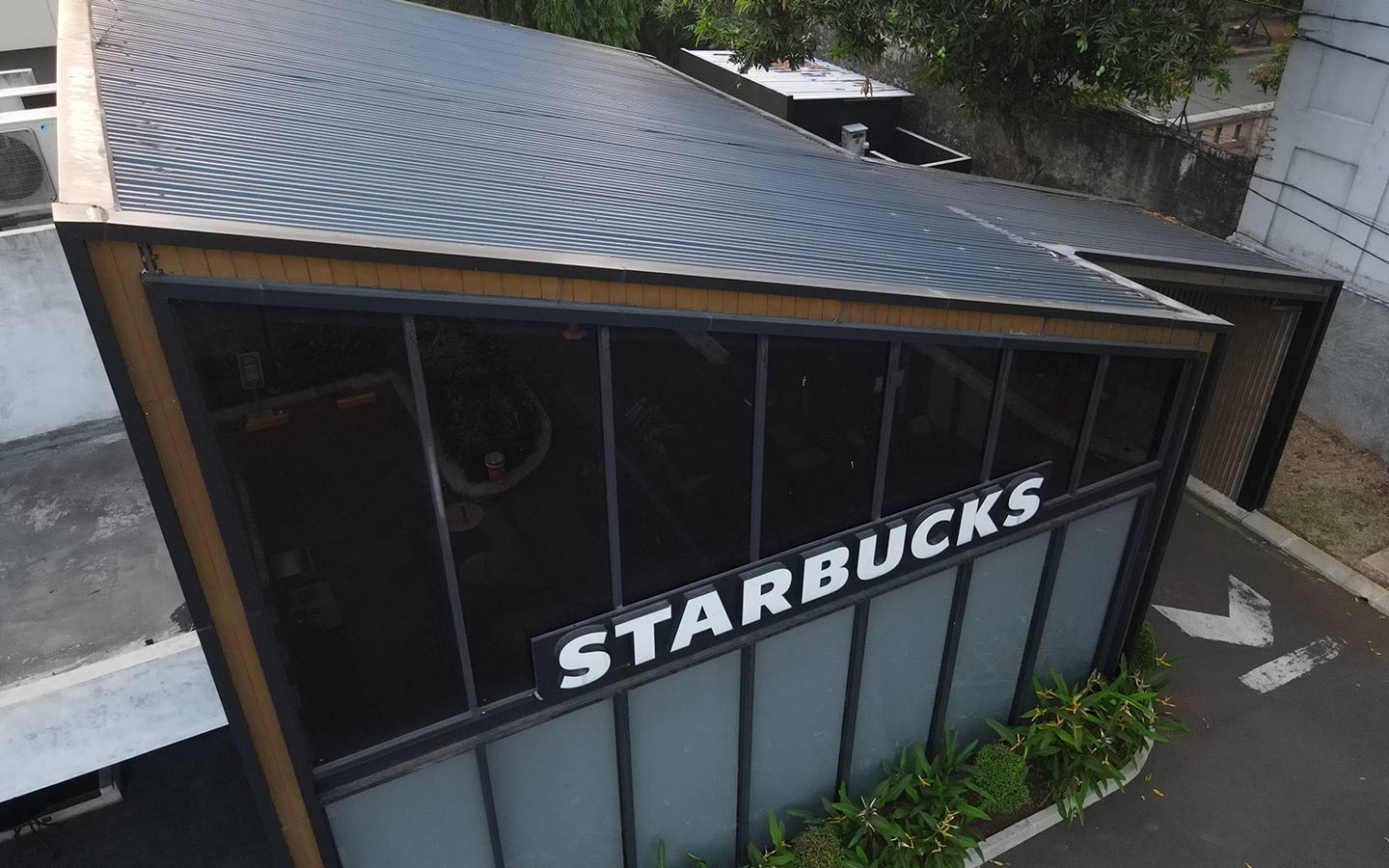 Starbucks Shilla Sawangan in Bojong Sari uses COLORBOND® for its sloping roof.
Starbucks Shilla Sawangan in Bojong Sari uses COLORBOND® for its sloping roof.
Houses with single-sided sloping roofs are increasingly popular due to their modern and functional appearance. This design conveys a minimalist impression while remaining visually appealing. However, like any type of roof, this model has its own advantages and disadvantages, and the selection of the right material is key to optimizing its functionality.
The contemporary feel and unique aesthetics of the single-sided sloping roof model make it highly sought after. In terms of functionality, it is on par with other types of roofs. Here are some advantages of the single-sided sloping roof model:
1. Aesthetic Appeal
The single-sided sloping roof model offers a unique and distinct visual impression. With its unusual angle of inclination, this roof model gives your house a strong character.
2. Maximized Natural Lighting
With the slope directed to one side, you can design large windows that allow sunlight to enter the home optimally. This not only makes the rooms appear brighter and warmer but also helps reduce the need for artificial lighting during the day.
3. Perception of Spaciousness
The design of the single-sided sloping roof can create an illusion of larger space. The higher ceiling on one side provides an airy feel and improves air circulation, allowing fresh air to flow more easily into the home.
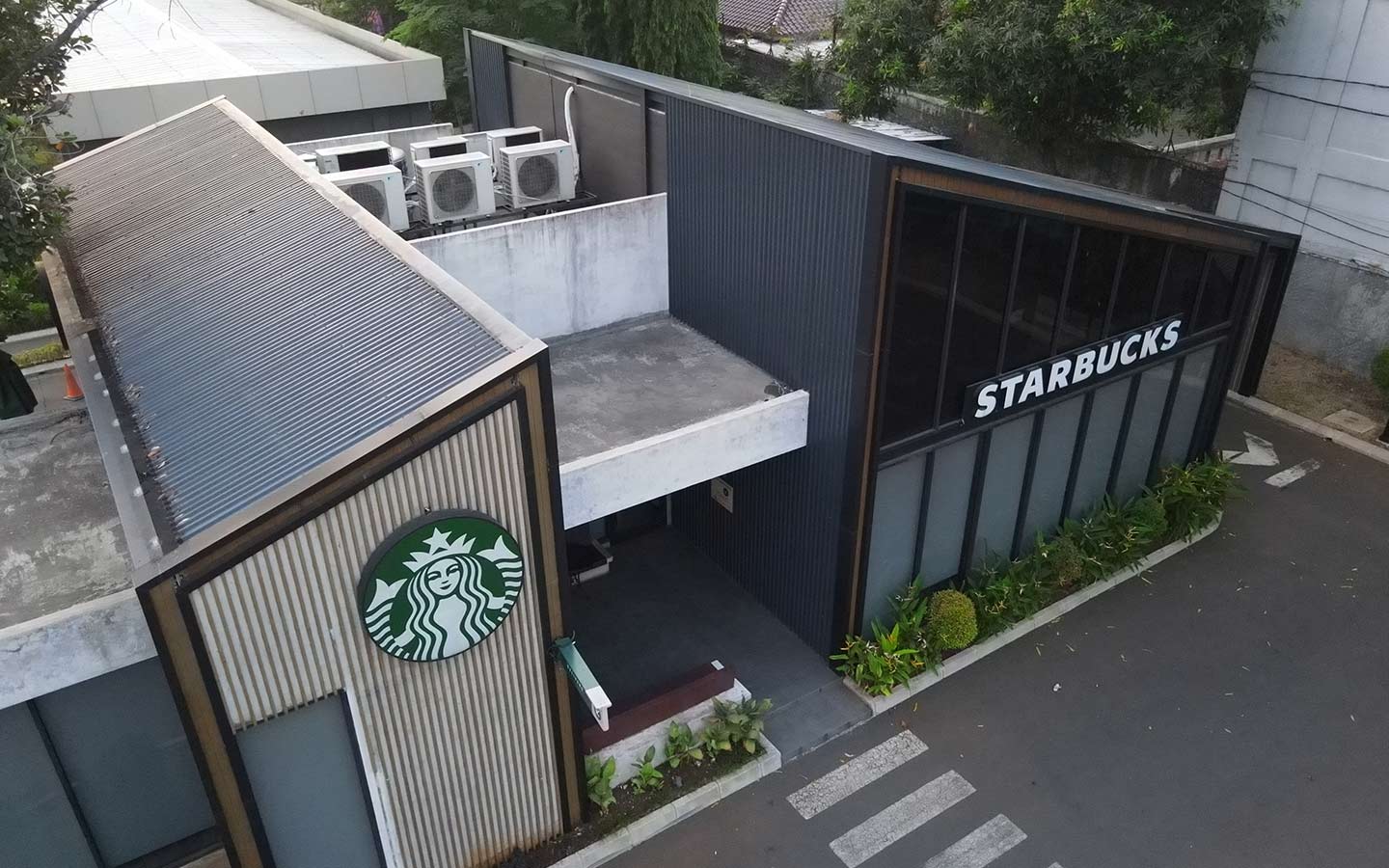 Starbucks Shilla Sawangan In Bojong Sari, COLORBOND® is used for its sloping roof.
Starbucks Shilla Sawangan In Bojong Sari, COLORBOND® is used for its sloping roof.
4. Efficient Drainage System
For those living in areas with high rainfall, the roof model is very practical. The design of the roof sloping to one side allows rainwater to flow easily into the drainage system. This way, the risk of leaks or water pooling on the roof can also be minimized.
5. Cost-Effective Construction
Compared to other types of roofs, the design of the single-sided sloping roof is relatively simpler. Therefore, you require fewer materials and less labor. The construction costs can be reduced without sacrificing the aesthetics or functionality of the home.
Disadvantages of the Single-Sided Sloping Roof Model
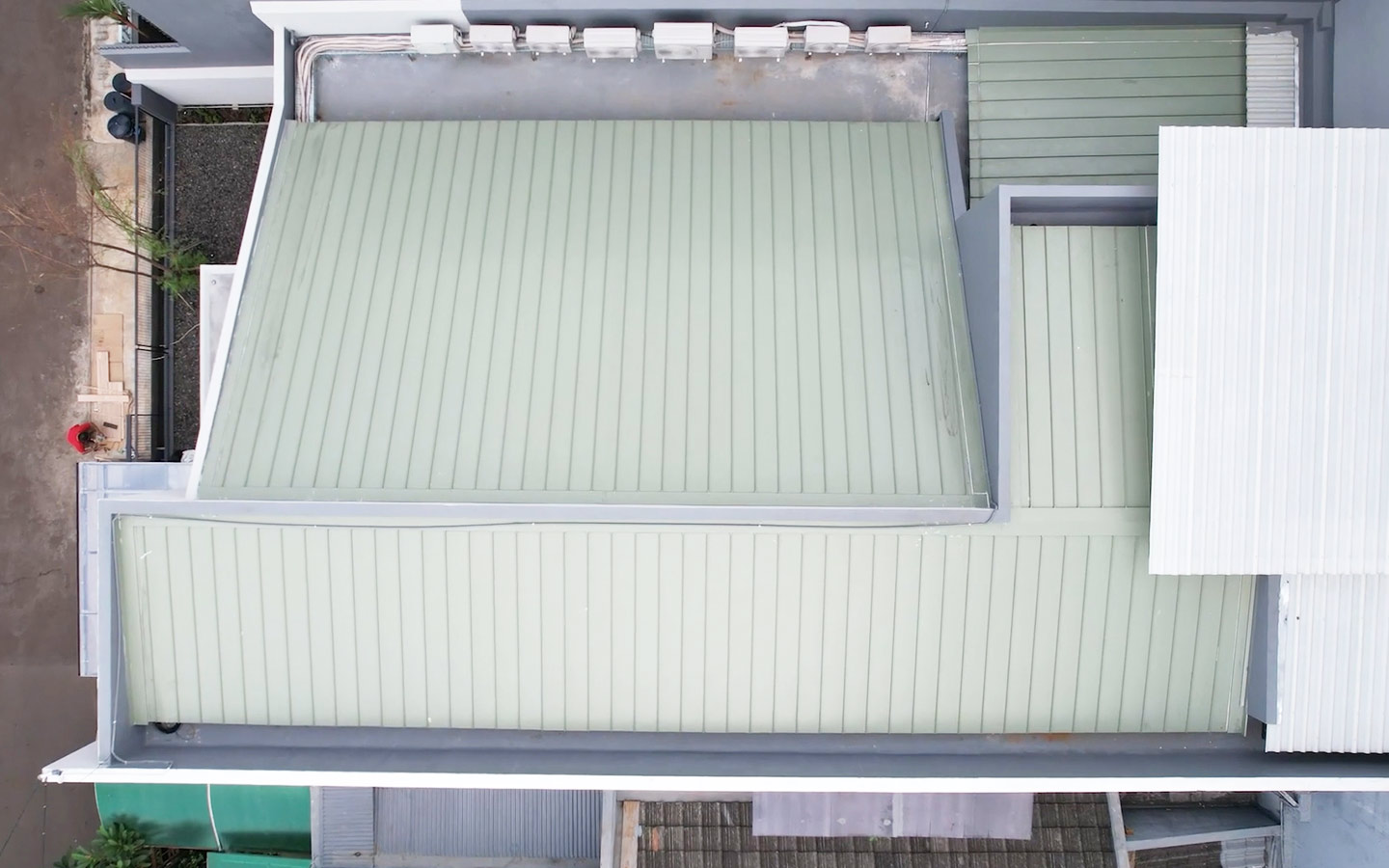
HMP Architect Studio in Jakarta, COLORBOND® is used for the single-sided sloping roof arranged in parallel.
Although the single-sided sloping roof offers many advantages, no design is perfect without its challenges. If you are considering this roof model for your home, there are several disadvantages that you should take into account.
1. Challenges in Adding Windows
One of the main disadvantages of the single-sided sloping roof is the difficulty in adding windows, particularly in terms of the aesthetic appeal of the facade. Given the sloped shape of the roof, you need to position the windows very precisely so as not to disrupt the overall appearance of the building and to maintain harmony with the roof's angle.
2. Difficulty in Installing Tiles
The unusual slope complicates the process of installing tiles on a single-sided sloping roof compared to flat or dual roofs. Additionally, this type of roof is generally less ideal for the climatic conditions in Indonesia. If you choose to use a single-sided sloping roof, it is important to pay attention to its angle. In Indonesia, the ideal roof slope angle ranges from 22 to 30 degrees to ensure proper water flow and reduce the risk of leaks.
Types of Single-Sided Sloping Roofs
 HMP Architect Studio in Jakarta, COLORBOND® is used for the single-sided sloping roof arranged in parallel.
HMP Architect Studio in Jakarta, COLORBOND® is used for the single-sided sloping roof arranged in parallel.
Sloping roofs, whether single-sided or double-sided, are suitable for various modern and contemporary architectural styles that emphasize functional and aesthetic design.
After considering several factors, you may start to be interested in applying the single-sided sloping roof model to your residence. However, before doing so, here are some types of single-sided sloping roofs you should know, based on the degree of slope and material selection:
1. Steep Sloping Roof
This type of roof is called a steep sloping roof because it has an inclination of more than 45 degrees. Due to its steep design, this roof type is capable of draining rainwater very quickly. Typically, this roof is made from lightweight materials, such as wood or light steel.
2. Gentle Sloping Roof
If you prefer a softer and more spacious appearance, a gentle sloping roof may be the right choice. With an inclination of less than 45 degrees, this roof gives the impression of a more open and airy space. Unlike the steep sloping roof, the materials commonly used for gentle sloping roofs are relatively heavier, such as concrete or tiles, which provide a solid and stable feel to the home’s structure.
3. Lightweight Steel Sloping Roof
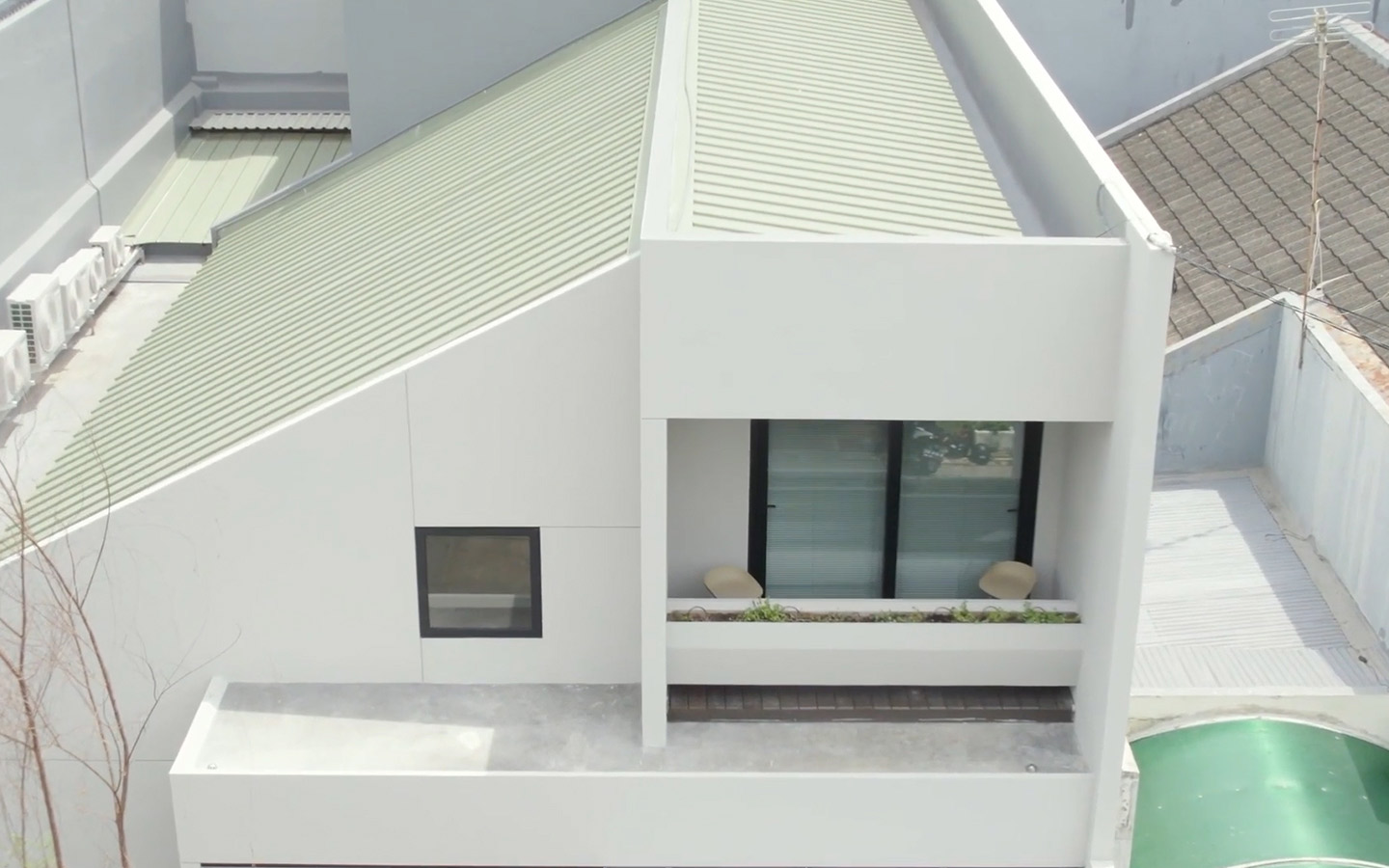 HMP Architect Studio in Jakarta, COLORBOND® is used for the single-sided sloping roof arranged in parallel.
HMP Architect Studio in Jakarta, COLORBOND® is used for the single-sided sloping roof arranged in parallel.
Lightweight steel is a popular material for sloping roofs due to its light weight and ease of installation. Lightweight steel sloping roofs are not only easy to install but also durable and require minimal maintenance. Additionally, this material is highly efficient in draining rainwater and reducing the risk of leaks.
4. Concrete Sloping Roof
Concrete sloping roofs are known for their strength and ability to support heavy loads. The protection they offer is also superior compared to other types of single-sided sloping roofs. Therefore, this roof type is suitable for larger homes that require a roof with high durability.
5. Atap Miring dari Genteng
For a more traditional appearance, a tile sloping roof can be an ideal choice. Tiles are available in various colors and patterns, providing design flexibility that matches your home's style. Although heavier than other materials, tiles provide a classic and elegant aesthetic.
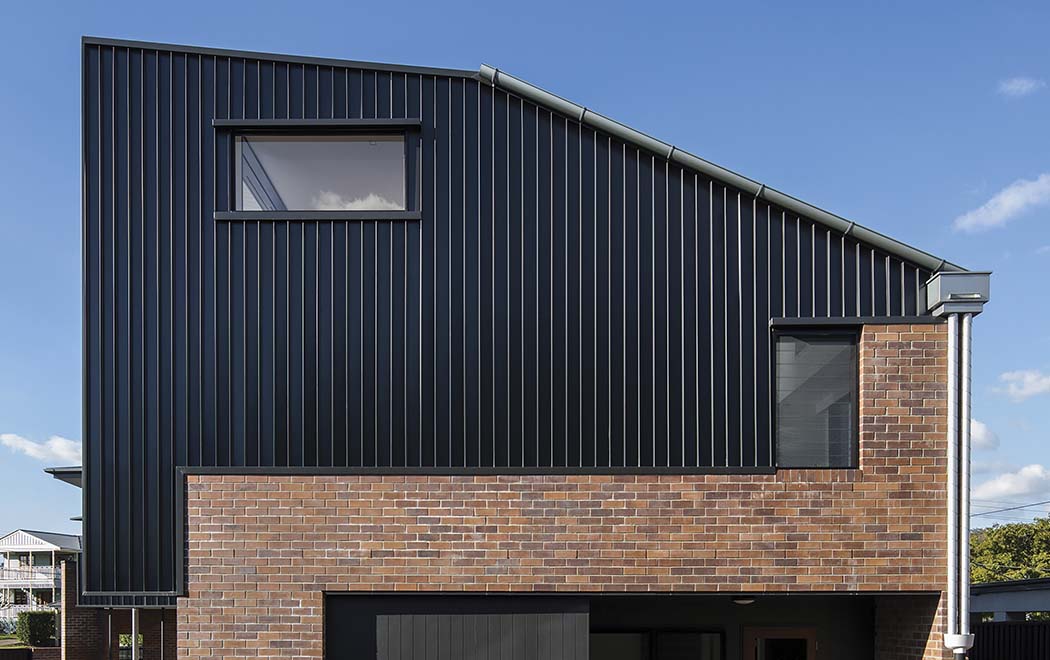
Buena Vista House in Queensland, Australia, uses COLORBOND® for its single-sided sloping roof.
By understanding the advantages and disadvantages of the single-sided sloping roof model, you can devise an appropriate strategy for implementing this type of roof. To ensure you obtain the best quality and durability, choose COLORBOND®!

